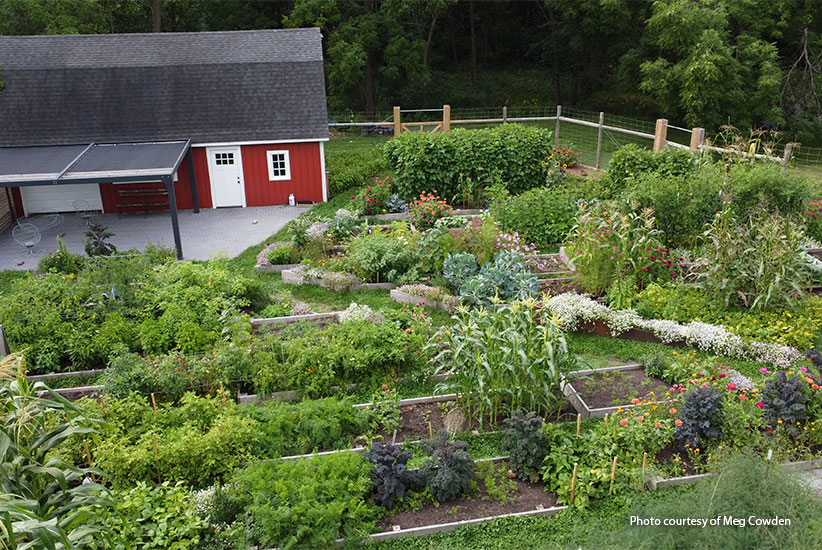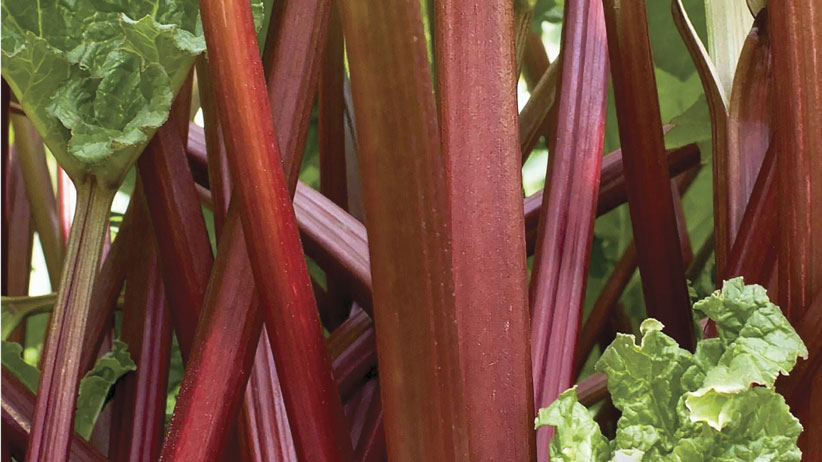
4 ways to get the most out of your vegetable garden
One of Meg Cowden’s goals is to harvest something to eat from her Minnesota garden for as many weeks as possible each year. She thinks of it like many of us do our flower gardens, where the goal is multi-season interest. Meg focuses on growing the right amount of food for her family through succession planting strategies like repeatedly sowing crops, staggering maturity and rotating crops throughout the seasons. She also uses these techniques to keep peak harvests less overwhelming. The goal is to have enough for fresh eating, sharing with friends and donating, and to keep up with canning, freezing and drying.
Meg shares lots of helpful garden tips in her book “Plant, Grow, Harvest, Repeat.” Here are a few that’ll help you stretch out your harvests for months.
You Might Also Like:
Meg Cowden's Favorite Vegetables to Grow & Preserve
Calculate How Many Vegetables to Plant
How to Start a Vegetable Garden
What I Love About Gardening

1. Start your vegetable garden early
A typical growing season in zone 4 Minnesota starts in May, but Meg likes to start planting in April. The secret to this early start lies in work that she does months earlier: When she’s cleaning up the garden and spreading compost on her beds in fall, she also chooses a couple of beds and sets up PVC hoop frames over them. In February she fastens the greenhouse poly material in the photo above over the frames. Even when temperatures are still below 20 degrees and there’s snow on the ground, she says that in two weeks, the soil is thawed, and by mid-April, the soil is warm enough for bok choy, broccoli, cabbage and kohlrabi. Later, she warms up the soil for her tomatoes and peppers with tunnels so she can get an earlier start there too. She leaves those tunnels up until after the risk of frost has passed.
2. Succession planting
So you’re not overwhelmed by more produce than you can eat, sow several small plantings of the same crop, known as succession planting, so you can harvest enough for a few meals at a time. Meg plants three rows of sweet corn every three weeks from early May to early July. You can also do this with carrots, beets, cilantro, lettuce and cabbage.
You Might Also Like:
7 Easy Plants to Start from Seed
How to grow your own greens
High-value produce for square-foot gardens
3. Grow plants with staggered maturity
Growing the same plants with different maturity dates is another way to prevent overwhelming harvests in the garden. Meg does this with cabbage, planting an early season ‘Tiara’, midseason ‘Famosa’ and late-season ‘Integro’ at the same time. She says you can play with type and timing for the ultimate succession planting of tomatoes: Cherries typically ripen first, salad tomatoes and smaller slicers mature next, and larger beef steaks are harvested last.
She staggers when she starts different types of tomatoes indoors, which in turn, affects when they are ready to plant in the garden. This helps her stretch the harvest over a couple of months starting in early summer instead of being overwhelmed all at once in late summer.
4. Know when to pull the plant
I will admit, I am one of those gardeners who keeps my crops long after they have produced more than I could ever need. But why not just pull the plant and replace it with something new? Meg does this with her pickling cucumbers: After she has pickled enough jars for her family, she removes the plant, making room for a fall crop of radish, arugula, spinach, cilantro, kohlrabi or lettuce.
The early beds she covered in February get four or five succession plantings every season. However, not all crops are good candidates for this method. Tomatoes, peppers and other members of the nightshade family are especially susceptible to soil-borne diseases. To help minimize exposure, she moves them around the garden from year to year and doesn’t grow other plants in their beds in the same year.
You Might Also Like:
Cool-Season Vegetables to Plant in Fall
2 Easy Ways to Preserve Your Tomato Harvest
Tomato Plant Problems
















